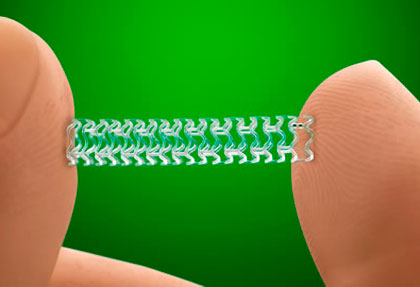
This meta-analysis was conducted based on 24 studies (BVS: n = 2567 and EES: n = 19,806) reporting the 2-year outcomes of both devices to compare the risk of thrombosis and target lesion failure in 7 comparative studies (3 randomized and 4 observational). Seventeen additional single-arm studies were used to estimate the incidence rates of these events.
In the 7 comparative studies, the risk for very late thrombosis between 1 and 2 years was numerically higher in BVS than in EES (odds ratio [OR]: 2.03; 95% confidence interval [CI]: 0.62 to 6.71).
The excess risk of thrombosis for BVS compared to EES at 2 years was significant (OR: 2.08; 95% CI: 1.02 to 4.26) as opposed to target lesion failure, which turned out to be very similar for both devices.
Conclusion
In this meta-analysis, bioresorbable scaffolds were associated with higher risk for very late thrombosis and global thrombosis at 2 years when compared with everolimus-eluting metallic drug-eluting stents.
Editorial
A previous meta-analysis carried out by Dr. Salvatore Cassese and his team published in The Lancet in 2015 showed higher rates of thrombosis (0.5 vs. 1.3%) and luminal loss for the BVS group. This new study ratifies that which had already been published. BVS theoretical advantages were expected to emerge many years after placement. However, these devices have not shown any superiority over drug-eluting stents, so far.
Original title: Very Late Scaffold Thrombosis of Bioresorbable Vascular Scaffold. Systematic Review and a Meta-Analysis.
Reference: Toshiaki Toyota et al. J Am Coll Cardiol Intv 2017;10:27–37.
Subscribe to our weekly newsletter
Get the latest scientific articles on interventional cardiology
We are interested in your opinion. Please, leave your comments, thoughts, questions, etc., below. They will be most welcome.






Excellent Web learning